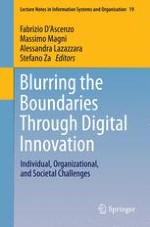This book examines the impact of digital innovation on organizations. It reveals how the digital revolution is redefining traditional levels of analysis while at the same time blurring the internal and external boundaries of the organizational environment. It presents a collection of research papers that examine the interaction between Information and Communication Technology (ICT) and behavior from a threefold perspective: First, they analyze individual behavior in terms of specific organizational practices like learning, collaboration and knowledge transfer, as well as the use of ICT within the organization. Second, they explore the dynamics at work on the border between the internal and the external environments by analyzing the organizational impact of ICT usage outside the company, as can be seen in employer branding, consumer behavior and organizational image. Third, they investigate how ICT is being adopted to help face societal challenges outside the company like waste and pollution, smart cities, and e-government.
The diversity of views offered makes this book particularly relevant for users, companies, scientists and governments. The content is based on a selection of the best papers – original double-blind peer reviewed contributions –presented at the annual conference of the Italian chapter of AIS, which took place in Rome, Italy, in October 2015, or in other reputable international peer-refereed Information Systems conferences.
